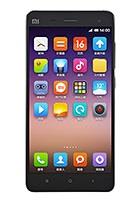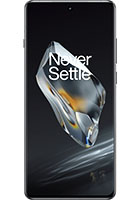Xiaomi Mi 4 (4G 16GB) vs OnePlus 12 (1TB/16GB)
Side by side comparison between Xiaomi Mi 4 vs OnePlus 12 phones, differences, pros, cons and full specifications. What's the better?
,
5"
IPS
IPS
1080x1920
13
MP
MP
8mp
3GB
RAM
RAM
Quad-core
3080
mAh
mAh
(Non removable)
vs
6.82"
AMOLED
AMOLED
1140x3168
50
MP
MP
32mp
16GB
RAM
RAM
Octa-core
5400
mAh
mAh
(Non removable)
What's the better phone? OnePlus 12 (1TB/16GB)
The phonemore's choice is much more technical than personal. Therefore, you shouldn't only consider this. Our goal is to help you, but what's important to us may not be important to you. You decide which one is the best! Comment!
| 18 Common items in both devices |
| Dual-LED flash |
| Autofocus / PDAF: phase detection autofocus |
| Capacitive |
| Multitouch |
| Accelerometer |
| Ambient light sensor |
| Compass |
| +11 specs and more in the table below |
Check the comparison table below for more items that are not evaluated in comparison score above.
Highlight differences Clear highlight📱 Model features | ||
| Xiaomi Mi 4 (4G 16GB) | OnePlus 12 (1TB/16GB) | |
| Model | Xiaomi Mi 4 (4G 16GB) | OnePlus 12 (1TB/16GB) |
| Other model names | Xiaomi Mi4 LTE Internacional, Xiaomi Mi4 4G, Xiaomi Leo | 加 12 (CPH2573, CPH2581, CPH2583, PJD110) |
| Country or region available |  (Global, International) |  China |
| Brand | Xiaomi | OnePlus |
| Release date | 12/1/2014 | 12/11/2023, Announced: 12/5/2023 |
| Depth | 8.9 millimeters (0.35 inches) | 9.15 millimeters (0.36 inches) |
| Size (width x height) | 68.5 x 139.2 millimeters (2.7 x 5.48 in) | 75.8 x 164.3 millimeters (2.98 x 6.47 in) |
| Weight | 149 grams (5.22 ounces) | 220 grams (7.7 ounces) |
| Build, materials | feature not registered | Aluminum frame, glass front/back Back: Gorilla Glass |
| Protection against water and others | Not supported | IP55 certified: dust resistant and protection from short-term exposure to water jets |
📲 Display | ||
| Xiaomi Mi 4 (4G 16GB) | OnePlus 12 (1TB/16GB) | |
| Display type | TFT LED-Backlit IPS LCD | LTPO AMOLED |
| Screen size | 5" inches | 6.82" inches |
| Screen-to-body ratio | ~72.3% (screen-to-body ratio) | ~76.8% (screen-to-body ratio) |
| Display resolution | 1080x1920 pixels | 1140x3168 pixels |
| Touchscreen | Capacitive Multitouch | Capacitive Multitouch |
| Pixel density (dot pitch) | 441 PPI | 494 PPI |
| Colors | 16 million | 1 billion |
| Scratch-resistant glass | Not supported | Gorilla Glass Victus 2 |
| Refresh rate | feature not registered | 120Hz |
| Display features | feature not registered | 600nits[typ], 4500nits[peak] Dolby Vision/HDR10 Always-On Display |
🤖 Operating System | ||
| Xiaomi Mi 4 (4G 16GB) | OnePlus 12 (1TB/16GB) | |
| System version | Android 4.4.3 KitKat | Android 14 |
| Firmware update | Android 6.0.1 Marshmallow | feature not registered |
| User Interface | feature not registered | OxygenOS 14 (Global) ColorOS 14 (China) |
⚙️ Processor | ||
| Xiaomi Mi 4 (4G 16GB) | OnePlus 12 (1TB/16GB) | |
| Chipset | 32bit: Qualcomm Snapdragon 801 MSM8974-AC (28nm) | 64bit: Qualcomm Snapdragon 8 Gen 3 (SM8650-AB) (4nm) |
| CPU | Quad-core, 1 processor: 4x 2.5GHz Krait 400 (Quad-core) | Octa-core, 4 processors: 1x 3.3GHz ARM Cortex-X4 (Single-core) 3x 3.15GHz ARM Cortex-A720 (Triple-core) 2x 2.96GHz ARM Cortex-A720 (Dual-core) 2x 2.26GHz ARM Cortex-A520 (Dual-core) |
| GPU graphical controller | Qualcomm Adreno 330 578Mhz | Qualcomm Adreno 750 |
| Performance (benchmark) | feature not registered | AnTuTu: 1812759 (v10) Geekbench: 5124 (v6) GFXBench: 157fps (ES 3.1 offscreen 1080p) |
💽 Memory and storage | ||
| Xiaomi Mi 4 (4G 16GB) | OnePlus 12 (1TB/16GB) | |
| RAM memory | 3GB LPDDR3 | 16GB LPDDR5 |
| Internal storage | 16GB (13GB available) | 1TB (968GB available) UFS 4.0 |
| External storage | Not supported | Not supported |
📶 Mobile networks | ||
| Xiaomi Mi 4 (4G 16GB) | OnePlus 12 (1TB/16GB) | |
| Dual-SIM | Not supported | Dual-SIM Standby - Call active on one sim card |
| SIM card | 1 slot (Single-SIM) micro-SIM (3FF) | 2 slots (Dual-SIM) nano-SIM (4FF) + e-SIM |
| Maximum Download / Upload | 150/50 Mbps | 2000/1024 Mbps |
| Network technology | 2G, 3G, 4G | 2G, 3G, 4G, 5G |
| Frequency, bands | Expand band details Collapse details | |
| GSM MHz band | Quad-Band 850/900/1800/1900 | Quad-Band 850/900/1800/1900 |
| Primary 2G network | GSM 850/900/1800/1900 | CDMA 800, GSM 850/900/1800/1900 |
| Primary 3G network | UMTS 850/900/1900/2100 | CDMA2000 1xEV-DO UMTS 850/900/1700/1900/2100 |
| Primary 4G network | LTE Cat4 800/850/900/1800/2100/2600 (Bands 1,3,5,7,8,20) | LTE Cat20 VoLTE International: LTE (1, 2, 3, 4, 5, 7, 8, 12, 13, 17, 18, 19, 20, 25, 26, 28, 30, 32, 66, 71) TD-LTE (38, 39, 40, 41, 48) India, China: LTE (1, 3, 4, 5, 7, 8, 18, 19, 20, 26, 28, 66) TD-LTE (34, 38, 39, 40, 41) |
| Primary 5G network | Not supported | International: SA/NSA (1, 2, 3, 5, 7, 8, 12, 20, 25, 28, 30, 38, 40, 41, 66, 71, 77, 78) India, China: SA/NSA (1, 3, 5, 7, 8, 20, 28, 38, 40, 41, 66, 77, 78) |
| Primary data network | GPRS, EDGE, UMTS, HSDPA, HSUPA, HSPA+, LTE | GPRS, EDGE, CDMA2000 EV-DO Rev 0, CDMA2000 EV-DO Rev A, UMTS, HSDPA, HSUPA, HSPA+, TD-LTE, LTE, LTE-A, SA/NSA |
| Secondary 2G network | Not supported | CDMA 800, GSM 850/900/1800/1900 |
| Secondary 3G network | Not supported | CDMA2000 1xEV-DO UMTS 850/900/1700/1900/2100 |
| Secondary 4G network | Not supported | LTE Cat20 VoLTE International: LTE (1, 2, 3, 4, 5, 7, 8, 12, 13, 17, 18, 19, 20, 25, 26, 28, 30, 32, 66, 71) TD-LTE (38, 39, 40, 41, 48) India, China: LTE (1, 3, 4, 5, 7, 8, 18, 19, 20, 26, 28, 66) TD-LTE (34, 38, 39, 40, 41) |
| Secondary data network | Not supported | GPRS, EDGE, CDMA2000 EV-DO Rev 0, CDMA2000 EV-DO Rev A, TD-SCDMA, UMTS, TD-HSDPA, HSDPA, HSUPA, HSPA+, TD-LTE, LTE, LTE-A, SA/NSA |
📷 Camera | ||
| Xiaomi Mi 4 (4G 16GB) | OnePlus 12 (1TB/16GB) | |
| Back camera (main camera) | 13 megapixels | (triple camera) 50 megapixels 64MP periscope telephoto f/2.670mm1/2"0.7µmPDAFOIS3x-optical-zoom 48MP ultrawide f/2.214mm114°1/2"0.8µmPDAF |
| Main camera resolution | 4128x3096 pixels | 8160x6120 pixels |
| Video recording (primary) | 4K UHD (3840x2160) 30 fps | 8K UHD (7680x4320) 24 fps |
| Flash | Dual-LED flash | Dual-LED flash |
| Focal aperture | f/1.8 (aperture) | f/1.6 (aperture) |
| Focal length | feature not registered | 23mm (lens) |
| Sensor size | 1/3" inches | 1/1.43" inches |
| Pixel size | 1.12µm pixel | 1.12µm pixel |
| Autofocus | Autofocus | PDAF: phase detection autofocus |
| Touch focus | Supported | Supported |
| Image stabilization | EIS: Digital stabilization | OIS: Optical stabilization |
| Zoom | Only digital zoom | Digital and optical zoom |
| Face/smile detection | Face detection, Smile detection | Face detection, Smile detection |
| BSI sensor | Not supported | Supported |
| HDR | HDR photo/video only main camera | HDR photo/video on both cameras |
| Camera extras | feature not registered | 8K@24fps 4K@30/60fps 1080p@30/60/240/480fps Slow motion Dolby Vision Hasselblad Color Calibration Sony sensor |
📸 Front camera | ||
| Xiaomi Mi 4 (4G 16GB) | OnePlus 12 (1TB/16GB) | |
| Front camera (secondary) | 8 megapixels | 32 megapixels |
| Front camera resolution | 3264x2448 pixels | 6528x4896 pixels |
| Video recording (secondary) | Full HD (1920x1080) | 4K UHD (3840x2160) |
| Front flash | Not supported | Not supported |
| Focal aperture | f/1.8 (aperture) | f/2.4 (aperture) |
| Focal length | feature not registered | 21mm (lens) |
| Sensor size | feature not registered | 1/2.74" inches |
| Pixel size | feature not registered | 0.8µm pixel |
🔉 Sound and multimedia | ||
| Xiaomi Mi 4 (4G 16GB) | OnePlus 12 (1TB/16GB) | |
| Loudspeaker | Supported | Stereo sound 24-bit/192kHz Dolby Atmos |
| Active noise cancellation | 2 microphones or more | 2 microphones or more |
| Radio | FM | Not supported |
| TV | Not supported | Not supported |
| Video formats | MP4, DivX, XviD, H.264, H.263, WMV | MP4, H.265, H.264, H.263, XviD, MKV |
| Audio formats | MP3, WAV, eAAC+, FLAC | MP3, WAV, WMA, eAAC+, FLAC |
🔌 Connectivity | ||
| Xiaomi Mi 4 (4G 16GB) | OnePlus 12 (1TB/16GB) | |
| USB | MicroUSB 2.0 | USB 3.2 Type-C, USB OTG On-The-Go |
| Audio output | 3.5mm jack | Type-C reversible connector |
| TV output | Micro-B USB MHL | USB Type-C (reversible) |
| Bluetooth | 4.0 + A2DP | 5.4 + A2DP/LE |
| WiFi | 802.11 a/b/g/n/ac [wifi5] (2.4GHz, 5GHz) WiFi Direct, hotspot | 802.11 a/b/g/n/ac/ax/be [wifi7/6E/6] (2.4GHz, 5GHz, 6GHz) + MIMO WiFi Direct, hotspot |
| DLNA | Supported | Supported |
| GPS | A-GPS, GeoTagging, GLONASS | A-GPS, GeoTagging, GLONASS, GALILEO, BeiDou, QZSS, NavIC |
| NFC | Supported | Supported |
| Infrared port | Supported | Not supported |
🧭 Sensors | ||
| Xiaomi Mi 4 (4G 16GB) | OnePlus 12 (1TB/16GB) | |
| Sensors | Accelerometer Ambient light sensor Barometer Compass Gyroscope Hall effect Proximity sensor | Accelerometer Ambient light sensor Compass Face unlock 2D Fingerprint sensor (under display) Gyroscope Proximity sensor |
| Vibrating alert | Supported | Supported |
🔋 Battery | ||
| Xiaomi Mi 4 (4G 16GB) | OnePlus 12 (1TB/16GB) | |
| Battery type | LiPo: li-ion polymer (Non removable) | LiPo: li-ion polymer (Non removable) |
| Battery capacity | 3080 mAh | 5400 mAh |
| Charger, watts | Wired charging | 100W Wired fast charging USB Power Delivery 1.0 |
| Inductive / wireless charging | feature not registered | 50W Qi wireless charging (Qi/PMA) 10W Reverse wireless charging |
| Talk time autonomy | feature not registered | feature not registered |
| Standby | 113.3 hours (4.7 days) | feature not registered |
➕ Other features | ||
| Xiaomi Mi 4 (4G 16GB) | OnePlus 12 (1TB/16GB) | |
| Call control | Voice dialing, Voice recorder, Voice commands | Voice dialing, Voice recorder, Voice commands |
| Messaging | SMS (Swype), MMS, E-mail, Push mail | SMS (T9), MMS, E-mail, Push mail |
| Hands-free calling | Supported | Supported |
| Video calling | Supported | Supported |
| Ringtones | Polyphonic and customized | Polyphonic and customized |
| Web browser | HTML, XHTML, HTML5 | HTML, XHTML, HTML5 |
| Antenna | Internal antenna | Internal antenna |
| Qwerty physical keyboard | Not supported | Not supported |
| Miscellaneous | • Colors: Black, White • USB OTG On-The-Go 1.3 • MI UI 5.0 • Quick Charge 2.0 • WiFi display • Java framework | • Colors: Silky Black, Flowy Emerald, Silver (Glacial White) |
☢️ Radiation rate | ||
| Xiaomi Mi 4 (4G 16GB) | OnePlus 12 (1TB/16GB) | |
| SAR 1.6W/kg (USA, Mexico, etc.) | feature not registered | 1.18W/kg (head), 0.68W/kg (body) |
| SAR 2W/kg (Europe, UK, etc.) | feature not registered | feature not registered |


 5 Advantages
5 Advantages  31 Advantages
31 Advantages